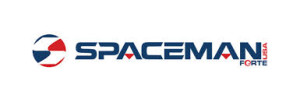 After reading this article you should have a good understanding of where to look for equipment and information, and what you will need to know to be successful serving soft serve ice cream or frozen yogurt.
After reading this article you should have a good understanding of where to look for equipment and information, and what you will need to know to be successful serving soft serve ice cream or frozen yogurt.
By Spaceman USA
Selecting the right soft serve machine is extremely important to your success. The “soft serve selector” tool on SpacemanUSA.com will lead you to the correct model if you are interested in purchasing a Spaceman soft serve machine. Otherwise, each individual manufacturer of soft serve machines should have knowledgeable sales representatives who can help you select the right machine for your business.
Below are some questions you should know the answers to in order to purchase the right machine:
- How many flavors would you like to serve?
1, 2, or 3 flavor models are available. Two flavor machines generally come with a twist option and are referred to as twin twist machines. Three flavor machines have five total handles, including two twists. Spaceman manufactures the only 5-handle machine certified for the US.
- Which type of product will you serve?
Frozen yogurt is traditionally sold by weight, so a gravity fed machine is your best option. Gravity fed machines allow a combination of product and air to flow from the hopper (refrigerated chamber for product storage) into the freezing cylinder (where the product is frozen into soft serve) by the force of gravity alone. Typically, soft serve produced in a gravity fed unit will yield product that has 25-35% overrun. Overrun is the percentage increase in volume of product that comes out of the machine as soft serve due to added air. In some cases, frozen yogurt is served through a pressurized or air pump unit, especially in the European market.
Soft serve ice cream is traditionally sold by large chains and quick serve restaurants through a pressurized or air pump machine. Air pump machines can pull a higher, controlled percentage of air into the product as it enters the freezing cylinder to create pressure and maintain the air to product ratio once it enters the freezing chamber. This means a higher overrun, typically 35-65% or more, depending on the ingredients in your product. Higher overrun results in a product that is lighter, airier, and typically regarded as creamier. It also means that your profit margin will increase if you are serving by volume or size, rather than by weight. This is because you are serving more air, and less product, per serving. Air pump machines are ideal for anyone who is interested in serving cones, especially if you plan to dip the cone. Air pump machines will also help prevent losing air from the cylinder, thereby maintaining product quality during slow times; a gravity machine may begin to beat out the air overtime or in standby mode, since the freezing cylinder is not under pressure. In some cases, soft serve ice cream is served through gravity fed units. This is user and customer preference. It is also always recommended to check with the manufacturer of your soft serve product to get their recommendations for specific products. If you serve a product intended for lower overrun through a pressurized machine, it may affect the flavor profile, and vice versa.
If you are serving a custard, gelato, or sorbet it is best to check with the manufacturer of the product and/or the machines to get their recommendations. However, any soft serve machine that you purchase will be capable of producing soft serve ice cream, frozen yogurt, gelato, sorbet or custard, and you can change products or flavors anytime. Depending on the manufacturer and model of your soft serve machine, changing flavors may be easy or difficult. If you plan to change flavors often, you should choose a machine with a digital viscosity control on the front of the unit, which is easy to adjust. Viscosity is a loosely used term to describe the hardness, or consistency of the product. Most manufacturers will measure viscosity by the amps drawn from the motor (the amount of energy needed to turn the product), or by temperature, or a combination of the two.
- What will your average serving size be? How many servings will be served during your busiest hour?
Depending on your serving size and output, you can determine the ideal freezing cylinder size and power (or output) of the machine. Most manufacturers will be able to tell you servings per hour, or capacity per hour in quarts or gallons. If you are serving small sizes (2-4 ounces) and a lower volume, then you can stay in a lower capacity machine with a smaller freezing cylinder (this means that you’ll have less product available at any given time). Purchasing a machine with a higher capacity than you need will result in wasted product, high energy costs, and higher upfront costs. It may also take more time to clean and maintain. However, having a machine with too low of a capacity will mean lost sales.
If you tell your manufacturer how many servings you intend to do per hour and what size, they will be able to make sure you get the right machine for your application. This is why I always ask, “How many servings during your busiest hour?” Some cafeterias and lunch rooms, for instance, will serve 90% of their sales during a 1 hour lunch period. Basing your buying decision on this information is much more conducive then basing it on daily servings.
- Do you prefer a floor standing or counter top unit?
Most soft serve models will be available in either floor standing or counter top, unless you need a high capacity machine, which is generally larger and requires the extra space for a floor unit. Floor standing models are nice because they have locking caster wheels and are easier to move – remember that these machines are heavy! Floor units also tend to cool better; specifically, the evaporator and components inside the machine will remove heat more easily, so the machine will run to its fullest capacity. Counter-top machines are ideal when floor space is not available or for single flavor machines. Single flavor machines typically have fewer components, allowing them to be more compact.
Other Machine Features to Consider:
- The Hopper Agitator saves employee time and helps to keep product food safe. A hopper agitator periodically mixes the product that is being stored in the refrigerated hopper to keep product evenly cooled and avoid ice buildup around hopper walls. Without the hopper agitator option, employees will have to manually stir product every 30-60 minutes. Frozen yogurt products especially tend to separate in the hopper, and will go bad if not stirred. Most Spaceman machines come standard with hopper agitator, as we have found that our customers prefer this option.
- Air Pump or Pressurized soft serve machines use pressure to add a higher, controlled percentage of air to the product mix and maintain pressure in the freezing cylinder so that the air does not escape. Air pump machines are ideal for customers looking for higher profits if selling by volume/size, creamier product, or anyone serving cones. Air pump machines also reduce the maintenance required to run a machine on a daily basis and during slow hours, but they add about 10 minutes to the weekly cleaning schedule (bi-weekly if using Heat Treatment). Please also see description and comments about the air pump above, in the section “Which type of product will you serve?”
- Air Cooled vs Water Cooled are the two methods for removing heat from the machine. Air cooled machines remove heat through a condenser fan, and water cooled machines remove heat through a water plate. Water cooled machines are more expensive and in most states require a glycol or chiller system, since it is often illegal to waste city water. A glycol system can be especially expensive, and typically the installation is an additional cost. Spaceman air-cooled machines have patented evaporator technology which means they reduce the heat output by 20-35% over other leading brands.
- Heat Treatment for Soft Serve Machines uses heat generated from the compressor to raise the temperature in the hopper(s) and cylinder(s) to over 152 degrees Fahrenheit once per day. The benefit to a heat treatment soft serve machine is that you can run the machine for 14 days before you need to do a full cleaning. The draw back to a heat treatment machine is the upfront cost; generally these machines are reserved for large chains who need to save on labor costs. Also note, heat treatment heats the product daily, so it is not recommended for frozen yogurt, as it will kill naturally occurring probiotics.
About Spaceman USA
Spaceman was founded in 1997 by a group of aerospace engineers who decided to utilize their knowledge of ice machine manufacturing to begin a business dedicated to the designing, developing, manufacturing of high quality soft serve ice cream machines and frozen beverage machines.
Almost 20 years later, the company has grown and expanded into one of the largest and most successful manufacturers of soft serve machines around the world. Spaceman currently has over 50,000 units sold worldwide!
Here at Spaceman USA, we are know for our quality, customer service, continuous innovation and improvement, and competitive prices.
We look forward to serving you!
This article is the contribution of Spaceman USA.




